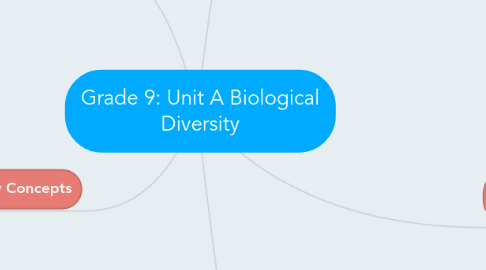Grade 9: Unit A Biological Diversity
by Sab Kel


1. Aims/ Key Concepts
1.1. -biological diversity -species -diversity within species -habitat diversity -niches -populations -asexual and sexual reproduction
1.2. -inheritance -chromosomes, genes and DNA (introductory treatment) -cell division >includes binary fission and -formation of sex cells -natural and artificial selection of genetic characteristics
2. Teaching Approaches
2.1. Class Discussions
2.2. Lectures
2.3. Prezi and Powerpoint presentations
2.4. Simulations
2.5. Labs
2.6. Think, Pair, Share
2.7. Videos
2.8. Class Projects
3. Genetics and Variation within and among species
3.1. 1. General Unit Introduction
3.1.1. What is Biological Diversity
3.1.2. Discuss diversity within and among species
3.2. 2. Lab- variations of heritable traits among students in the classroom and among students and their parents.
3.3. 3. Habitat and Lifestyle and a short summative assessment
3.3.1. 3. Prezi lecture and doing some questions from Wrap-up Topic 1-2
3.4. 4. Asexual and Sexual Reproduction
3.4.1. Binary Fission
3.4.2. Asexual Spores
3.4.3. Asexual reproduction in plants
3.4.4. Budding
3.4.5. Sexual Reproduction in Plants
3.4.6. Sexual reproduction in Animals
3.4.7. 6. DNA and Chromosomes
3.5. 5. Variations
3.5.1. Continuous and discrete
3.5.2. Recessive and Dominant traits
3.5.3. Nature vs. Nurture
3.5.4. Mutations and mutagens
3.6. 6. Quiz Day
3.6.1. Summative Assessment
3.7. 7. Artificial and Natural Selection
3.7.1. Breeding
3.7.2. Cloning
3.7.3. Human impact on Biodiversity and Extinction
3.7.4. Preserving Biodiversity
3.7.4.1. Zoo's
3.7.4.2. Seed bank
3.8. 8. Unit Review Class
3.8.1. Lecture
3.8.2. Free Class time
